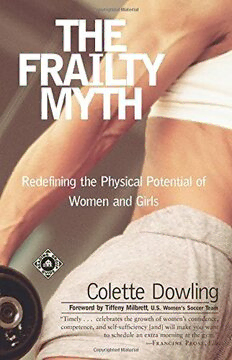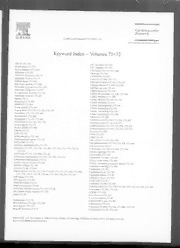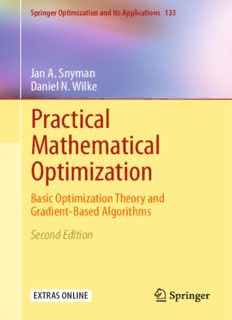
Practical Mathematical Optimization: Basic Optimization Theory and Gradient-Based Algorithms PDF
Preview Practical Mathematical Optimization: Basic Optimization Theory and Gradient-Based Algorithms
Springer Optimization and Its Applications 133 Jan A. Snyman Daniel N. Wilke Practical Mathematical Optimization Basic Optimization Theory and Gradient-Based Algorithms Second Edition Springer Optimization and Its Applications VOLUME133 ManagingEditor PanosM.Pardalos(UniversityofFlorida) Editor–CombinatorialOptimization Ding-ZhuDu(UniversityofTexasatDallas) AdvisoryBoard J.Birge(UniversityofChicago) S.Butenko(TexasA&MUniversity) S.Rebennack(KarlsruheInstituteofTechnology) F.Giannessi(UniversityofPisa) T.Terlaky(LehighUniversity) Y.Ye(StanfordUniversity) AimsandScope Optimization has been expanding in all directions at an astonishing rate during the last few decades. New algorithmic and theoretical techniques have been developed, thediffusionintootherdisciplineshasproceededatarapidpace,andourknowledge of all aspects of the field has grown even more profound. At the same time, one of themoststrikingtrendsinoptimizationistheconstantlyincreasingemphasisonthe interdisciplinarynatureofthefield. Optimizationhasbeenabasictoolinallareasof appliedmathematics,engineering,medicine,economicsandothersciences. The series Springer Optimization and Its Applications publishes undergraduate andgraduatetextbooks,monographsandstate-of-the-artexpositoryworksthatfocus on algorithms for solving optimization problems and also study applications involv- ingsuchproblems.Someofthetopicscoveredincludenonlinearoptimization(convex andnonconvex),networkflowproblems,stochasticoptimization,optimalcontrol,dis- crete optimization, multi-objective programming, description of software packages, approximationtechniquesandheuristicapproaches. Moreinformationaboutthisseriesathttp://www.springer.com/series/7393 · Jan A. Snyman Daniel N. Wilke Practical Mathematical Optimization Basic Optimization Theory and Gradient-Based Algorithms Second Edition 123 JanA.Snyman DanielN.Wilke DepartmentofMechanical DepartmentofMechanical andAeronauticalEngineering andAeronauticalEngineering UniversityofPretoria UniversityofPretoria Pretoria Pretoria SouthAfrica SouthAfrica Additionalmaterialtothisbookcanbedownloadedfromhttp://extras.springer.com. ISSN1931-6828 ISSN1931-6836 (electronic) SpringerOptimizationandItsApplications ISBN978-3-319-77585-2 ISBN978-3-319-77586-9 (eBook) https://doi.org/10.1007/978-3-319-77586-9 LibraryofCongressControlNumber:2018935221 MathematicsSubjectClassification(2010):65K05,90C30,90C26,90C59 1stedition:©SpringerScience+BusinessMedia,Inc.2005 2ndedition:©SpringerInternationalPublishingAG,partofSpringerNature2018 Thisworkissubjecttocopyright. AllrightsarereservedbythePublisher,whetherthewholeorpartof thematerialisconcerned,specificallytherightsoftranslation,reprinting,reuseofillustrations,recitation, broadcasting,reproductiononmicrofilmsorinanyotherphysicalway,andtransmissionorinformation storageandretrieval, electronicadaptation, computersoftware, orbysimilarordissimilarmethodology nowknownorhereafterdeveloped. Theuseofgeneraldescriptivenames,registerednames,trademarks,servicemarks,etc.inthispublication doesnotimply,evenintheabsenceofaspecificstatement,thatsuchnamesareexemptfromtherelevant protectivelawsandregulationsandthereforefreeforgeneraluse. Thepublisher,theauthorsandtheeditorsaresafetoassumethattheadviceandinformationinthisbook arebelievedtobetrueandaccurateatthedateofpublication. Neitherthepublishernortheauthorsorthe editorsgiveawarranty,expressorimplied,withrespecttothematerialcontainedhereinorforanyerrors oromissionsthatmayhavebeenmade. Thepublisherremainsneutralwithregardtojurisdictionalclaims inpublishedmapsandinstitutionalaffiliations. Printedonacid-freepaper ThisSpringerimprintispublishedbytheregisteredcompanySpringerInternationalPublishingAG partofSpringerNature Theregisteredcompanyaddressis:Gewerbestrasse11,6330Cham,Switzerland To our wives and friends Alta and Ella Preface to the second edition The first edition (2005) of Practical Mathematical Optimization has proved to be a rigorous yet practical introduction to the fundamental principles of mathematical optimization. As stated in the preface to the first edition also included in this new edition, the aim of the text was to equip the reader with the basic theory and algorithms to allow for the solution of practical problems with confidence and in an informed way. However, since the publication of the first edition more than a decade ago, the complexity of and computing requirements for the solution of mathematical optimization problems have significantly increased. The accessibility and definition of computing platforms have expanded by huge proportions. The fundamental physical limitations on speeding up central processing units have spurred on the advancement of multi-core computingenvironmentsthatnowregularlyincludegraphicalprocessing units. The diversity of software platforms is ever expanding with new domainandcomputingspecificsoftwareplatformsbeingreleasedweekly. This edition addresses these recent advancements together with novel ideas already touched on in the first edition that have since matured considerably. They include the handling of noise in objective functions and gradient-only optimization strategies introduced and discussed in the first edition. In order to assist in the coverage of further develop- ments in this area, and in particular of recent work in the application of mainly gradient-only methods to piecewise smooth discontinuous objec- tive functions, it is a pleasure to welcome as co-author for this edition the younger colleague, Daniel N. Wilke. vii viii PREFACE SECOND EDITION This second edition of Practical Mathematical Optimization now takes account of the above recent developments and aims to bring this text up to date. Thus, this book now includes a new and separate chap- ter dedicated to advanced gradient-only formulated solution strategies for optimizing noisy objective functions, specifically piecewise smooth discontinuous objective functions, for which solution formulations and strategies are thoroughly covered. A comprehensive set of alternative solution strategies are presented that include gradient-only line search methods and gradient-only approximations. The application of these strategies is illustrated by application to well-motivated example prob- lems. Alsonewtothiseditionisadedicatedchapterontheconstruction of surrogate models using only zero-order information, zero- and first- orderinformation, andonlyfirst-orderinformation. Thelatterapproach beingparticularlyeffectiveinconstructingsmoothsurrogatesfordiscon- tinuous functions. A further addition is a chapter dedicated to numerical computation which informs students and practicing scientists and engineers on ways to easily setup and solve problems without delay. In particular, the scientific computing language Python is introduced, which is available on almost all computing platforms ranging from dedicated servers and desktops to smartphones. Thus, this book is accompanied by a Python module pmo, which makes all algorithms presented in this book easily accessible as it follows the well-known scipy.optimize.minimize con- vention. The module is designed to allow and encourage the reader to includetheirownoptimizationstrategieswithinasimple,consistent,and systematicframework. Thebenefittograduatestudentsandresearchers is evident, as various algorithms can be tested and compared with ease and convenience. Tologicallyaccommodatethenewmaterial,thiseditionhasbeenrestruc- tured into two parts. The basic optimization theory that covers intro- ductory optimization concepts and definitions, search techniques for unconstrainedminimization,andstandardmethodsforconstrainedopti- mization is covered in the first five chapters to form Part I. This part containsachapterofdetailedworked-outexampleproblems, whileother chapters in Part I are supplemented by example problems and exercises that can be done by hand using only pen, paper, and a calculator. In Part II, the focus shifts to computer applications of relatively new and PREFACE SECOND EDITION ix mainly gradient-based numerical strategies and algorithms that are cov- ered over four chapters. A dedicated computing chapter using Python is included as the final chapter of Part II, and the reader is encouraged to consult this chapter as required to complete the exercises in the pre- ceding three chapters. The chapters in Part II are also supplemented by numerical exercises that are specifically designed so as to encourage the students to plan, execute, and reflect on numerical investigations. In summary, the twofold purpose of these questions is to allow the reader, inthefirstplace,togainadeeperunderstandingoftheconceptualmate- rialpresentedand,secondly,toassistindevelopingsystematicandscien- tific numerical investigative skills that are so crucial for the modern-day researcher, scientist, and engineer. Jan Snyman and Nico Wilke Pretoria 30 January 2018 Preface to the first edition It is intended that this book is used in senior- to graduate-level semester courses in optimization, as offered in mathematics, engineering, com- puterscience,andoperationsresearchdepartments. Hopefully,thisbook will also be useful to practicing professionals in the workplace. Thecontents ofthisbookrepresentthe fundamental optimizationmate- rial collected and used by the author, over a period of more than twenty years, in teaching Practical Mathematical Optimization to undergradu- ateaswellasgraduateengineeringandsciencestudentsattheUniversity of Pretoria. The principal motivation for writing this work has not been the teaching of mathematics per se, but to equip students with the nec- essary fundamental optimization theory and algorithms, so as to enable them to solve practical problems in their own particular principal fields of interest, be it physics, chemistry, engineering design, or business eco- nomics. The particular approach adopted here follows from the author’s own personal experiences in doing research in solid-state physics and in mechanical engineering design, where he was constantly confronted by problems that can most easily and directly be solved via the judicious useofmathematicaloptimizationtechniques. Thisbookis,however,not a collection of case studies restricted to the above-mentioned specialized research areas, but is intended to convey the basic optimization princi- ples and algorithms to a general audience in such a way that, hopefully, the application to their own practical areas of interest will be relatively simple and straightforward. Many excellent and more comprehensive texts on practical mathemati- cal optimization have of course been written in the past, and I am much indebted to many of these authors for the direct and indirect influence xi xii PREFACE FIRST EDITION their work has had in the writing of this monograph. In the text, I have tried as far as possible to give due recognition to their contri- butions. Here, however, I wish to single out the excellent and possibly underratedbookofD.A.WismerandR.Chattergy(1978),whichserved to introduce the topic of nonlinear optimization to me many years ago, and which has more than casually influenced this work. With so many excellent texts on the topic of mathematical optimiza- tion available, the question can justifiably be posed: Why another book and what is different here? Here, I believe, for the first time in a rel- atively brief and introductory work, due attention is paid to certain inhibiting difficulties that can occur when fundamental and classical gradient-based algorithms are applied to real-world problems. Often students, after having mastered the basic theory and algorithms, are disappointed to find that due to real-world complications (such as the presence of noise and discontinuities in the functions, the expense of function evaluations, and an excessive large number of variables), the basic algorithms they have been taught are of little value. They then discard,forexample,gradient-basedalgorithmsandresorttoalternative non-fundamental methods. Here, in Chapter 4 (now Chapter 6) on new gradient-based methods, developed by the author and his co-workers, the above-mentioned inhibiting real-world difficulties are discussed, and it is shown how these optimization difficulties may be overcome without totally discarding the fundamental gradient-based approach. The reader may also find the organization of the material in this book somewhat novel. The first three chapters present the basic theory, and classical unconstrained and constrained algorithms, in a straightforward manner with almost no formal statement of theorems and presentation of proofs. Theorems are of course of importance, not only for the more mathematically inclined students, but also for practical people inter- ested in constructing and developing new algorithms. Therefore, some of the more important fundamental theorems and proofs are presented separately in Chapter 6 (now Chapter 5). Where relevant, these theo- rems are referred to in the first three chapters. Also, in order to prevent cluttering, the presentation of the basic material in Chapters 1 to 3 is interspersed with very few worked-out examples. Instead, a gener- ous number of worked-out example problems are presented separately in Chapter 5 (now Chapter 4), in more or less the same order as the
The list of books you might like

Haunting Adeline

The Sweetest Oblivion (Made Book 1)

The Spanish Love Deception

The 5 Second Rule: Transform your Life, Work, and Confidence with Everyday Courage
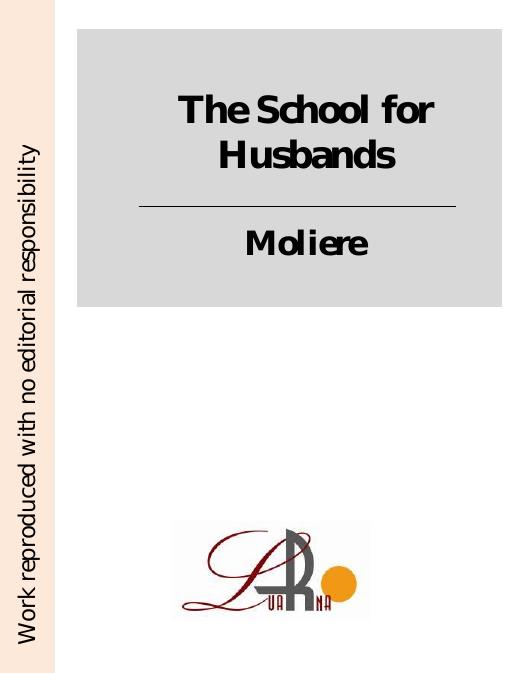
The School for Husbands

AR-M236 AR-M276
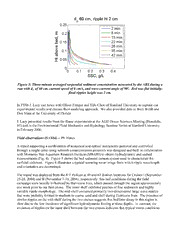
DTIC ADA523737: Sand Ripple Dynamics on the Inner Shelf

Amazon Rekognition - Developer Guide
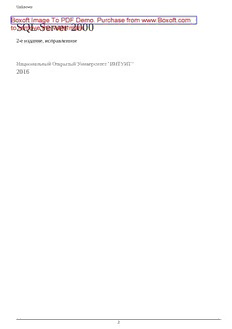
SQL Server 2000

by Sherman AleXie

Time to eat Delicious meals for busy lives by Hussain, Nadiya

New species and records of Psocoptera (Insecta) from Argentina
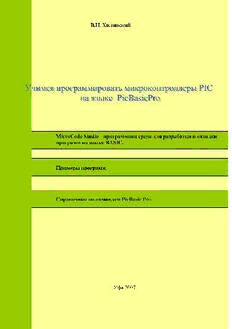
Учимся программировать микроконтроллеры PIC на языке PicBasicPro
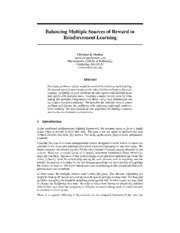
DTIC ADA454702: Balancing Multiple Sources of Reward in Reinforcement Learning

Dear Wife

byggforskningsrådet

NOTAS SOBRE A TEORIA DOS PRINCÍPIOS DE ROBERT ALEXY Natália Braga Ferreira NOTES ...
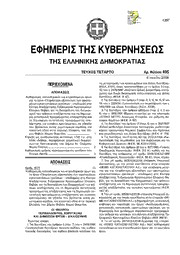
Greek Government Gazette: Part 4, 2006 no. 495

Reiki for Dummies

Tomato container gardening: 7 easy steps to healthy harvests from small spaces

Hermanas de sangre
